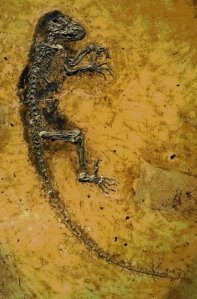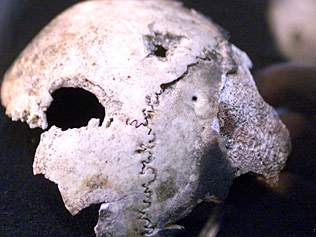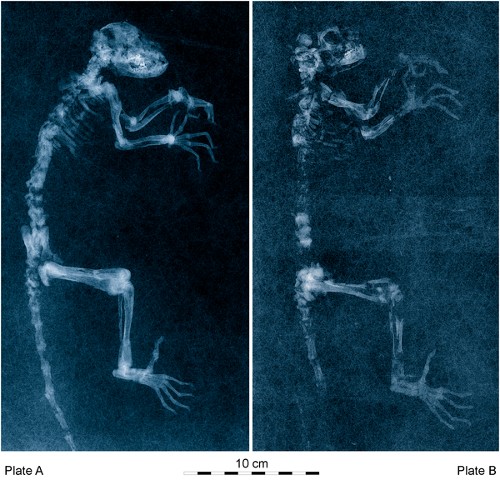
© Franzen JL, Gingerich PD, Habersetzer J, Hurum JH, von Koenigswald W, et al. 2009 Complete Primate Skeleton from the Middle Eocene of Messel in Germany: Morphology and Paleobiology. PLoS ONE 4(5): e5723. doi:10.1371/journal.pone.0005723 Darwinius masillae / Ida took 47 million years to become an overnight celebrity.
It is science for the Mediacene age.
On Tuesday morning, researchers will unveil a 47-million-year-old fossil they say could revolutionize the understanding of human evolution at a ceremony at the American Museum of Natural History.
But the event, which will coincide with the publishing of a peer-reviewed article about the find, is the first stop in a coordinated, branded media event, orchestrated by the scientists and the History Channel, including a film detailing the secretive two-year study of the fossil, a book release, an exclusive arrangement with ABC News and an elaborate Web site.
"Any pop band is doing the same thing," said Jorn H. Hurum, a scientist at the University of Oslo who acquired the fossil and assembled the team of scientists that studied it. "Any athlete is doing the same thing. We have to start thinking the same way in science."
The specimen, designated
Darwinius masillae, is of a monkeylike creature that is remarkably intact: even the contents of its stomach are preserved. The fossil was bought two years ago in Germany by the University of Oslo, and a team of scientists began work on their research. Some of the top paleontologists in the world were involved in the project, and it impressed the chief scientist at the Natural History museum enough to allow the press conference.




Comment: An interesting comment on the media splash given to this archeological find, especially in view of this article:
Science in Turmoil - Are we Funding Fraud?